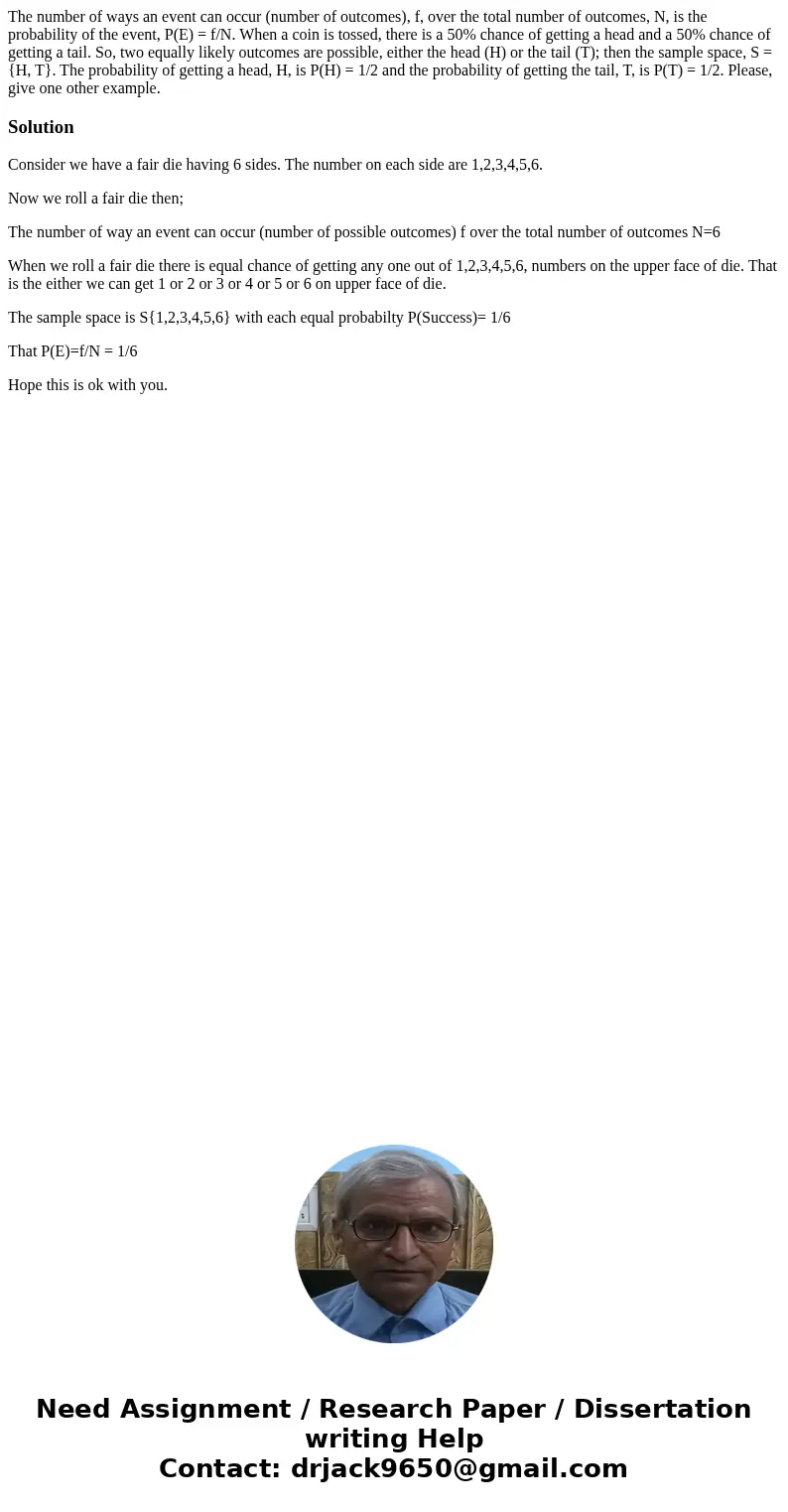The number of ways an event can occur number of outcomes f o
The number of ways an event can occur (number of outcomes), f, over the total number of outcomes, N, is the probability of the event, P(E) = f/N. When a coin is tossed, there is a 50% chance of getting a head and a 50% chance of getting a tail. So, two equally likely outcomes are possible, either the head (H) or the tail (T); then the sample space, S = {H, T}. The probability of getting a head, H, is P(H) = 1/2 and the probability of getting the tail, T, is P(T) = 1/2. Please, give one other example.
Solution
Consider we have a fair die having 6 sides. The number on each side are 1,2,3,4,5,6.
Now we roll a fair die then;
The number of way an event can occur (number of possible outcomes) f over the total number of outcomes N=6
When we roll a fair die there is equal chance of getting any one out of 1,2,3,4,5,6, numbers on the upper face of die. That is the either we can get 1 or 2 or 3 or 4 or 5 or 6 on upper face of die.
The sample space is S{1,2,3,4,5,6} with each equal probabilty P(Success)= 1/6
That P(E)=f/N = 1/6
Hope this is ok with you.

 Homework Sourse
Homework Sourse